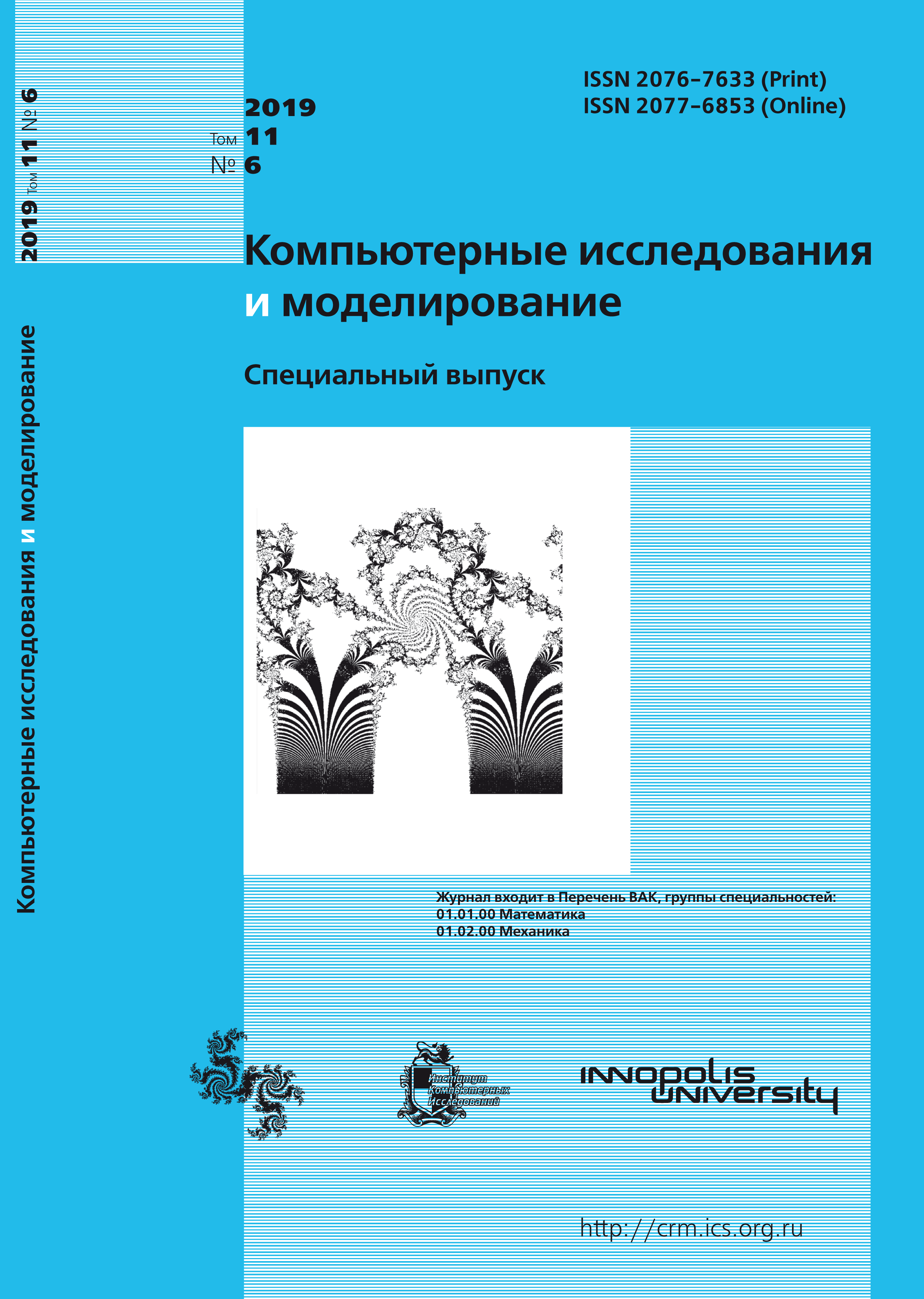All issues
- 2025 Vol. 17
- 2024 Vol. 16
- 2023 Vol. 15
- 2022 Vol. 14
- 2021 Vol. 13
- 2020 Vol. 12
- 2019 Vol. 11
- 2018 Vol. 10
- 2017 Vol. 9
- 2016 Vol. 8
- 2015 Vol. 7
- 2014 Vol. 6
- 2013 Vol. 5
- 2012 Vol. 4
- 2011 Vol. 3
- 2010 Vol. 2
- 2009 Vol. 1
Application of the grid-characteristic method for mathematical modeling in dynamical problems of deformable solid mechanics
 pdf (3587K)
pdf (3587K)
The grid-characteristic method is a promising numerical method for solving hyperbolic systems of equations, e.g., equations describing elastic and acoustic waves. This method has high precision and allows physically correct simulations of wave processes in heterogeneous media. The grid-characteristic method makes it possible to correctly take into account boundary conditions and conditions on surfaces with different physical characteristics. The method offers the greatest advantages for one-dimensional equations, especially in combination with a fixed difference grid, as in conventional grid-based methods. However, in the multidimensional case using the algorithms of splitting with respect to spatial variables, the author has managed to preserve its positive qualities. The use of the method of Runge–Kutta type, or the integro-interpolation method for hyperbolic equations makes it possible to effectively carry out a generalization of methods developed for linear equations, in the nonlinear case, in particular, to enforce the difference analogs of the conservation laws, which is important for shock-capturing, for example, discontinuous solutions. Based on the author’s variant of the grid-characteristic method, several important problems of seismic prospecting, seismic resistance, global seismic studies on Earth and Mars, medical applications, nondestructive testing of railway lines, the simulation of the creation and characteristics of composite materials for the aerospace industry and other areas of practical application were numerically solved. A significant advantage of the constructed method is the preservation of its stability and precision at the strains of the environment. This article presents the results of a numerical solution based on the grid-characteristic method to the problem of modeling elastic-plastic deformation in traumatic brain injury.
Copyright © 2019 Petrov I.B.
Indexed in Scopus
Full-text version of the journal is also available on the web site of the scientific electronic library eLIBRARY.RU
The journal is included in the Russian Science Citation Index
The journal is included in the RSCI
International Interdisciplinary Conference "Mathematics. Computing. Education"






